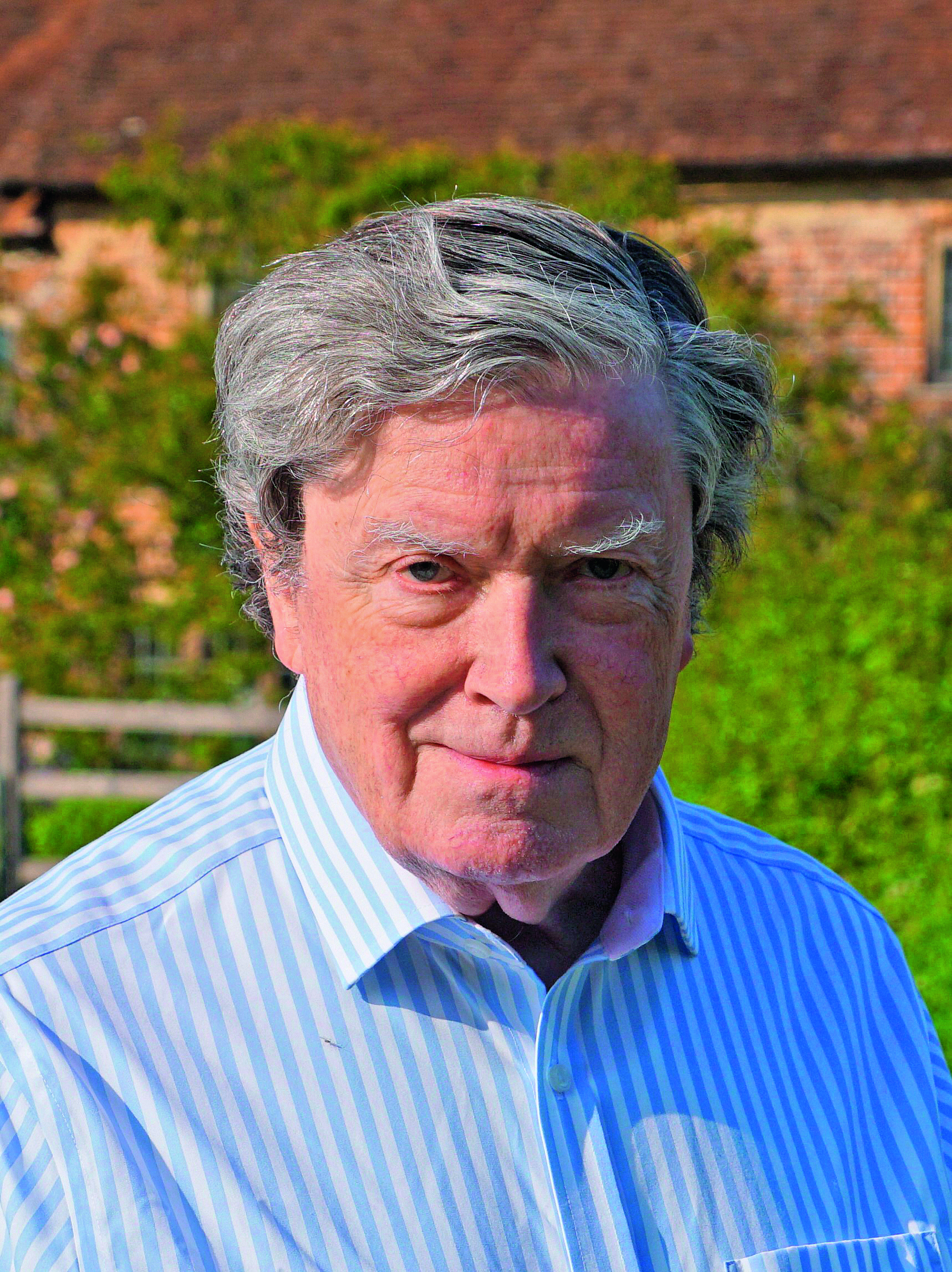The Newt, Somerset: An 18th-century walled garden with the finest display of trained apples
Nowhere else in the country has a finer display of trained apples than the 18th-century walled garden at The Newt in Somerset, writes Charles Quest-Ritson. Photographs by Clive Nichols.


There was a time when the must-see garden in the West Country was Hadspen House, near Castle Cary. Its chatelaine Penelope Hobhouse made a much-praised garden there in the 1970s, with elegant combinations of well-chosen shrubs and herbaceous plants. Then, in the 1980s, the old walled garden at Hadspen was let to tenants called Nori and Sandra Pope — Canadians who transformed it into a living essay on the use of colour in the garden and wrote a classic book about their art. Now the garden — and the whole estate — is once again compulsory viewing for all garden-lovers (and many others) under its new name, The Newt in Somerset.
What has happened? The Hobhouse estate was sold in 2013 to a South African couple, Koos Bekker and his wife, Karen Roos. They own the historic Babylonstoren wine estate, which has a vast, French-style potager near Franschhoek. It is quite mind-boggling to consider the transformation of Hadspen that they have wrought over the past 10 years. And all for the better.
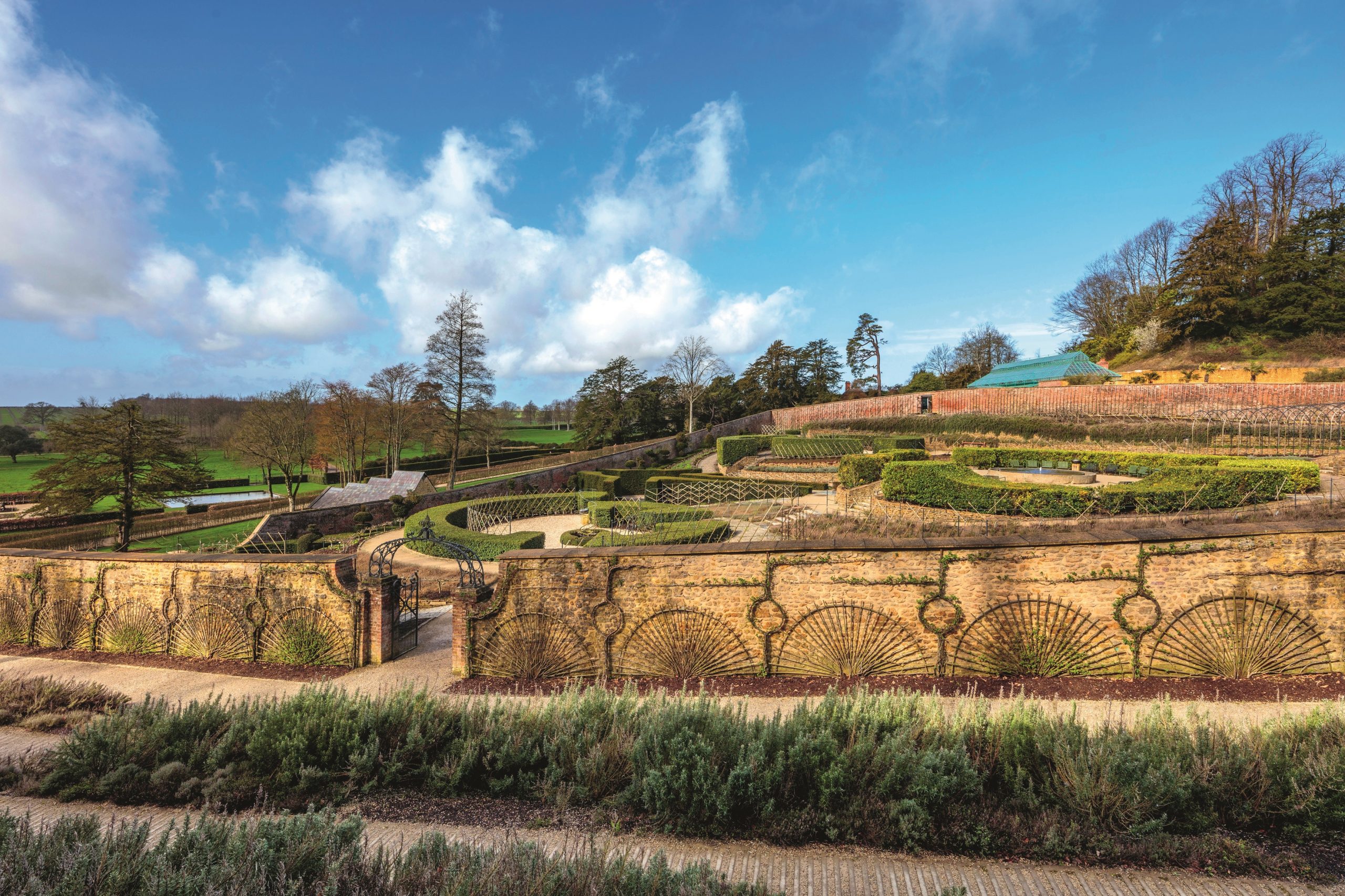
One of many new features at The Newt is the redesigned Parabola garden. It is an egg-shaped walled garden of weathered brick oriented to the south-west. Henry Hobhouse II constructed it on a steep slope in the late 18th century as a protected fruit garden. Its present layout is the work of 70-year-old French architect Patrice Taravella, who ‘believes a garden should be both beautiful and useful’ (don’t we all?). It was Mr Taravella who made the garden at Prieuré d’Orsan, an RHS Partner Garden in the Cher département, which exemplifies French traditions of growing fruit, salads, herbs and vegetables.
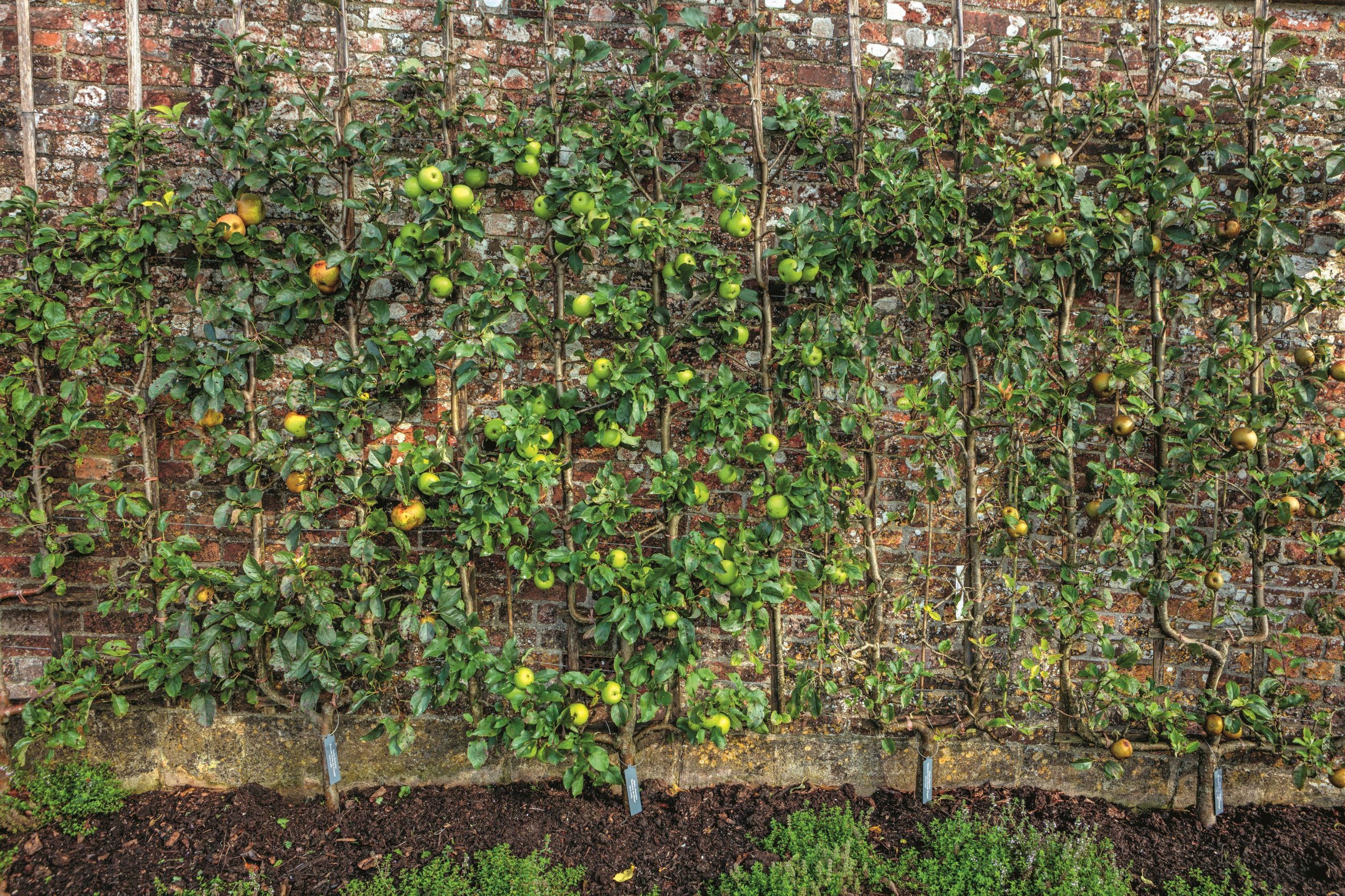
Mr Taravella also decided to develop the Parabola as a classic exemplar of French techniques of fruit growing. Every inch of its inner walls is now covered in apple trees, tightly pruned and meticulously trained. There are 330 cultivars, mainly old British varieties, but also some of the best French apples and a total of 689 trees, because most are duplicated.
Frank Matthews, the highly respected fruit-tree nursery near Tenbury Wells in Worcestershire, sourced the scions and bench-grafted them, with British cultivars on MM106 rootstocks and French ones on M9. The Parabola is a living dictionary of French pomological expertise.
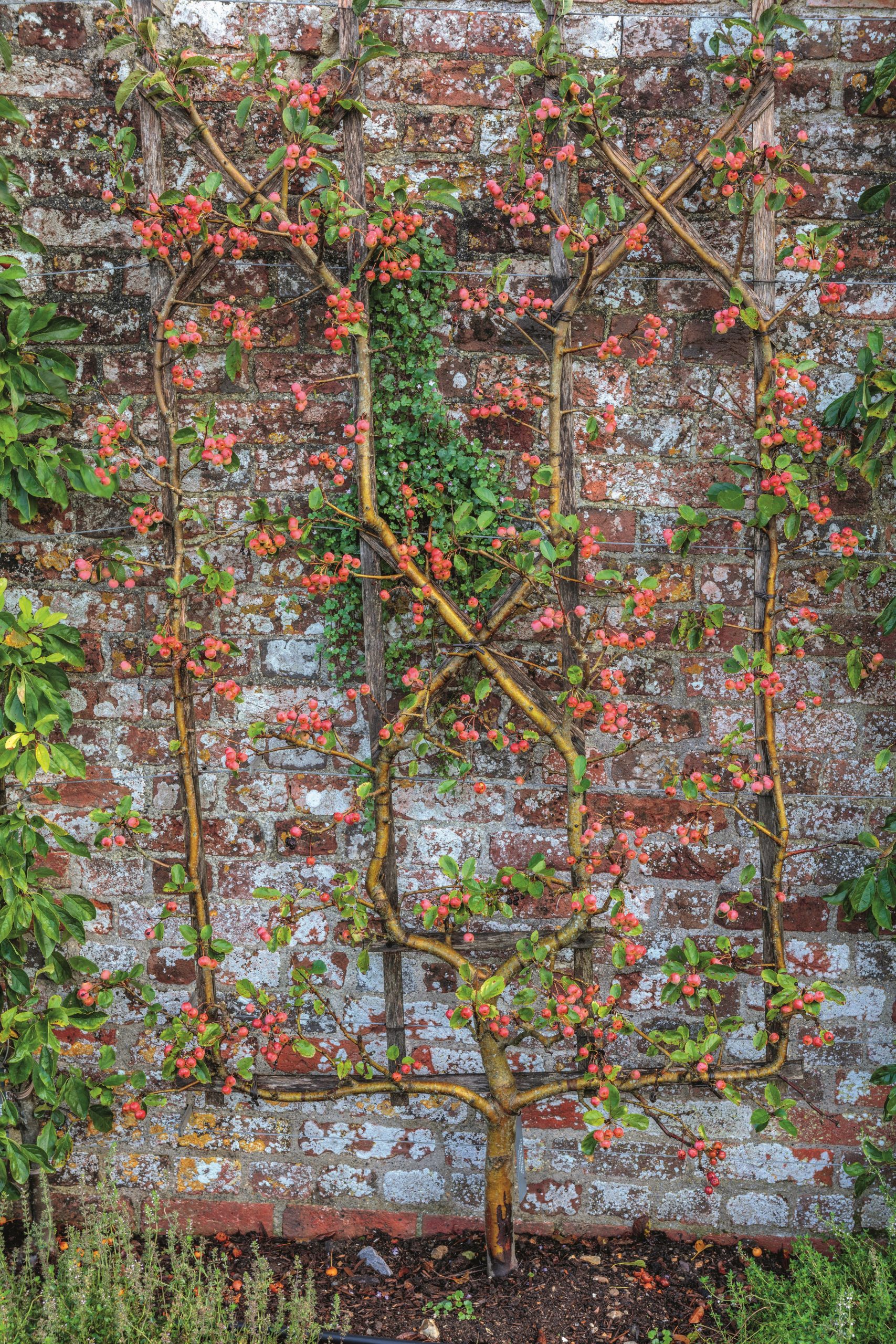
Many of the trees are shaped as ‘single-U palmettes’, where two stems are chosen near the base to run first horizontally and then vertically, so that two straight stems run in parallel up the wall. If there are four vertical stems, they are known as ‘double-U’ shapes. Some are trained as palmettes verriers, where a rising series of U-shapes are formed from the central stems. Elsewhere in the Parabola are examples of diagonal cordons, arcures (espaliers trained as a series of arches) and low-trained trees known in England as ‘stepovers’. All are pruned four times a year, to encourage the right growths, including fruiting spurs for the next season and for later years.
These apples were planted in 2017 and have grown well, although not all are yet in full production. As some of the slower growers have yet to reach their ultimate height — meaning the top of the wall — the gardeners continue to build up the framework of every tree, consolidating and condensing its structure.
Exquisite houses, the beauty of Nature, and how to get the most from your life, straight to your inbox.
One of the joys of visiting The Newt is the energy and enthusiasm of its staff — qualities one notices in everything they do and say. Andy Lewis has curated the Parabola since its inception and now runs courses on pruning and grafting, plus a workshop on how to train espalier trees. He trained at the horticultural colleges at Kingston Maurward in Dorset and Sparsholt in Hampshire and works alongside one full-time and one part-time colleague. He has acquired his detailed knowledge of apple-growing from Gilles Guillot, a skilled practitioner of traditional techniques who was head gardener at the Prieuré d’Orsan in France. He comes over to help and advise at The Newt several times a year and stays for up to two weeks on each occasion.
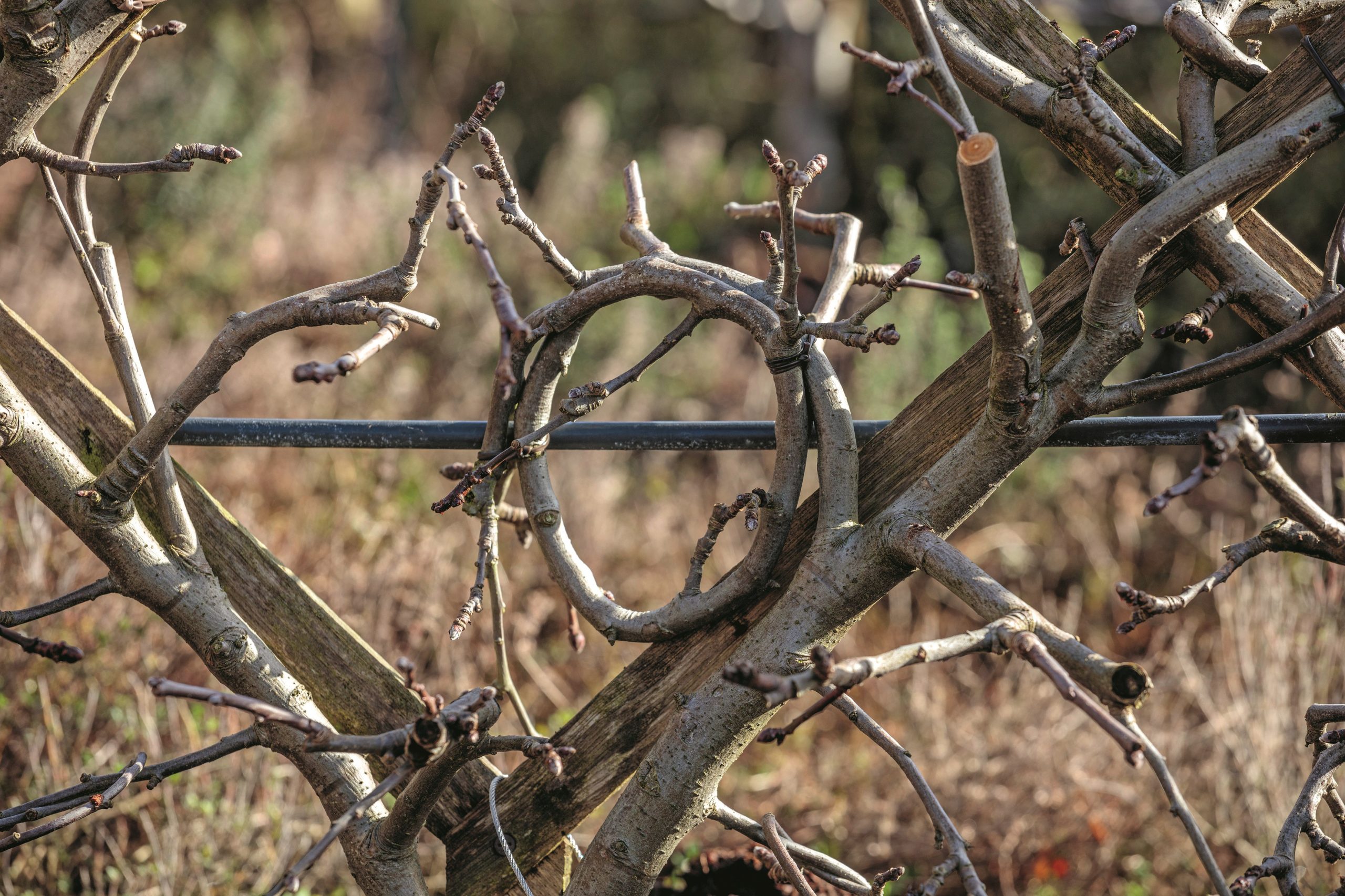
Most of the apple trees are planted against the walls, county by county. This geographical way of displaying them is the basis for the recent National Collection status awarded to The Newt by Plant Heritage. There is also a section for apples of Scottish, Welsh and Irish origin. Varieties from the two English counties most associated with apple growing — Kent and Somerset — each have a freestanding metal arcade over which they are trained. Here is the place to find such varieties as ‘Court of Wick’, ‘Beauty of Bath’ and ‘Fair Maid of Taunton’, all originally from Somerset, and apples of Kentish origin, such as ‘Bountiful’, ‘Falstaff’ and ‘Mabbott’s Pearmain’.
The display of meticulously labelled, trained and cared-for apples is a remarkable sight. They fruit intensively and visitors marvel that so many can be grown so closely to each other. The temptation to pick is irresistible and, fortunately, ‘we like it when our visitors taste our apples,’ says head gardener Stephen Herrington, who manages a team of some 40 gardeners, groundsmen, woodsmen and estate workers. And there is no better way to learn about apples than by tasting them.
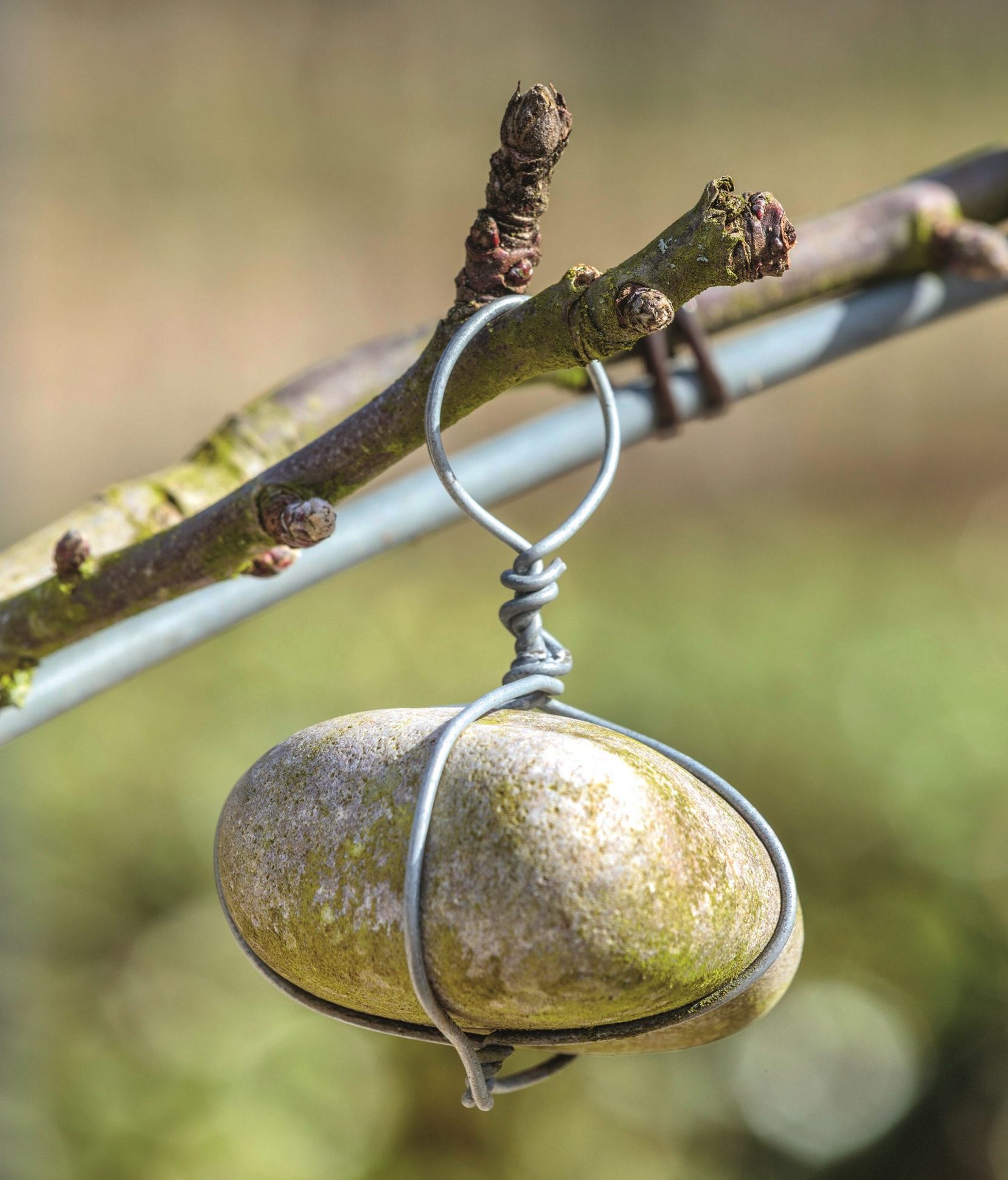
The collection in the Parabola is restricted to dessert apples. Cookers and dual-purpose apples are grown in a separate kitchen garden and there are fields of cider apples to supply fruit for the estate cider. The whole garden, so far as possible, is maintained according to organic principles. The apples may not be as beautiful and unblemished as supermarket fruit, but pests and diseases have not proved a problem. Canker — a fungal infection that can appear at any time — is rare and has always been cut out successfully without any lasting damage to the plant.
The old cultivars were often planted for their ability to survive in storage for many months, so that the pleasures and benefits of eating them were available right through until the following summer. One idea in discussion is to build storage facilities to illustrate how, in the days before refrigeration, our ancestors selected varieties that ripened slowly over many months, so that there was always a sequence of perfect apples available.

Nowhere in Britain will you see the art of training fruit trees practised to such perfection as at The Newt. There are many places in France to see the French enthusiasm for fruit-growing at work. Every département has a branch of the Croqueurs des Pommes, typically with 500 members, a display garden (sometimes two), autumn shows and days for tuition in pruning and grafting. It is absurd that, in the British Isles, we do not even have a National Apple Society.
The RHS has a good collection of cultivars at Wisley in Surrey, and so does the garden at West Dean in West Sussex — better still is the National Collection at Brogdale in Kent — but you will look in vain for the exceptional standards of cultivation displayed at The Newt.
Visit www.thenewtinsomerset.com
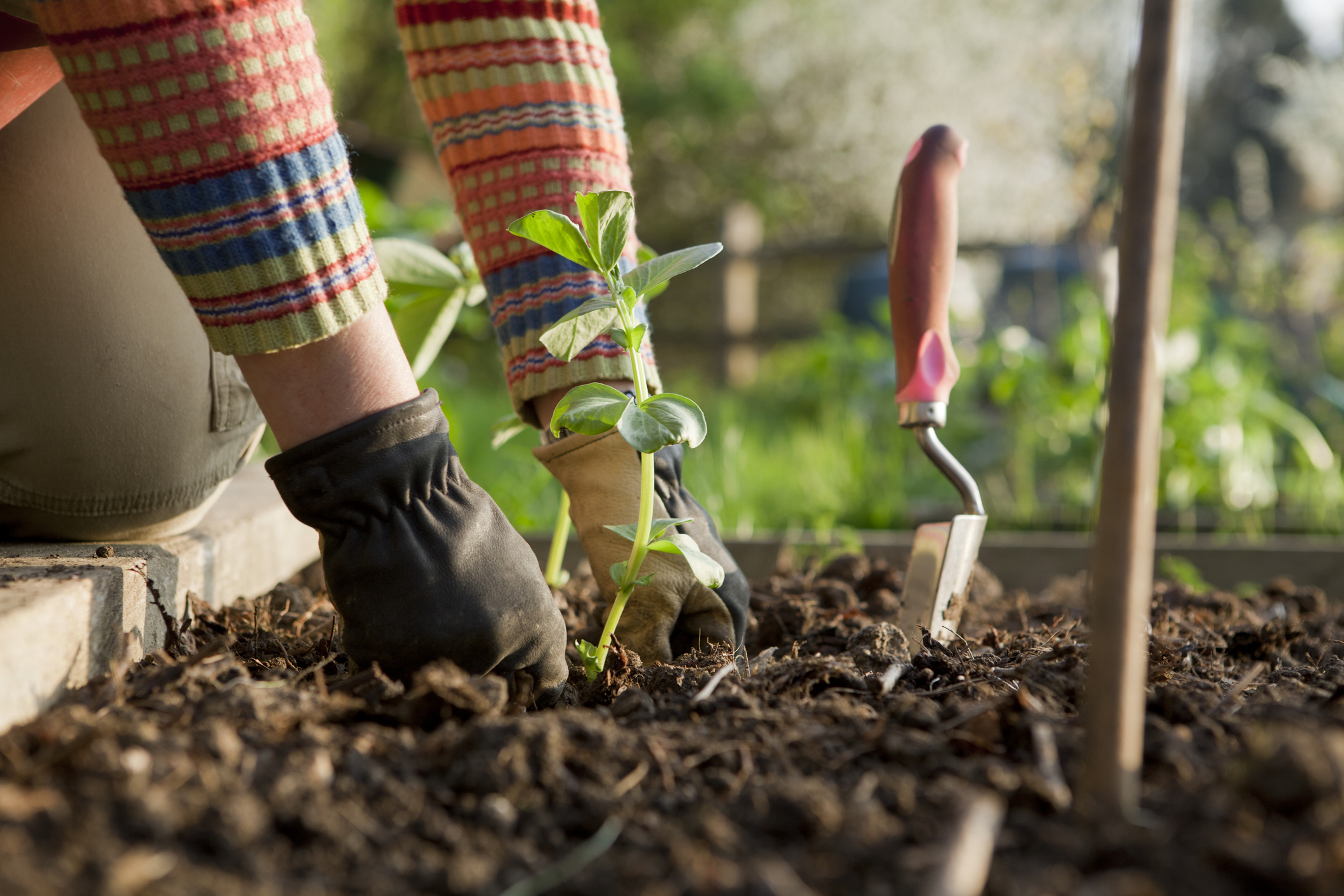
How to grow broad beans: How to plant them, how to look after them, and the best varieties for your garden
Mark Diacono names the best broad beans for flavour, reliability, tenderness and the beauty of the plant itself.
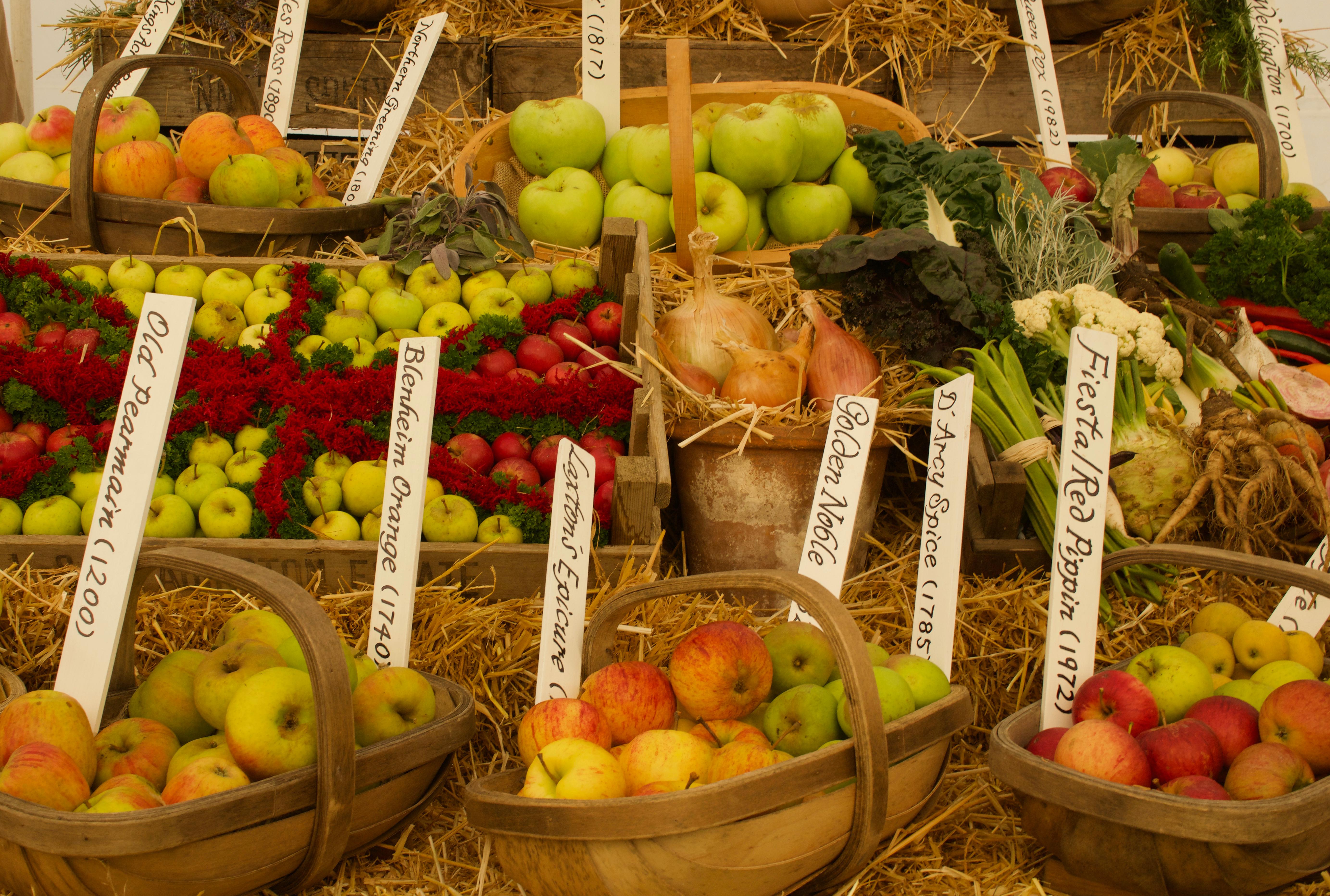
Credit: Alamy
There are 7,000 varieties of apple out there — and you've probably tasted less than a dozen. Here's how to put that right.
Our grow-your-own expert columnist Mark Diacono shares his advice on how to branch out in to the wonderful world of

Curious Questions: Why do leaves change colour in Autumn? And why do some go yellow while others are red, purple or brown?
The riotous colours on the trees around us are one of the highlights of the year — but why do leaves
Charles Quest-Ritson is a historian and writer about plants and gardens. His books include The English Garden: A Social History; Gardens of Europe; and Ninfa: The Most Romantic Garden in the World. He is a great enthusiast for roses — he wrote the RHS Encyclopedia of Roses jointly with his wife Brigid and spent five years writing his definitive Climbing Roses of the World (descriptions of 1,6oo varieties!). Food is another passion: he was the first Englishman to qualify as an olive oil taster in accordance with EU norms. He has lectured in five languages and in all six continents except Antarctica, where he missed his chance when his son-in-law was Governor of the Falkland Islands.
